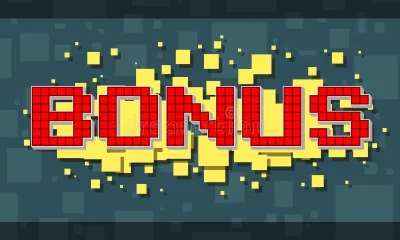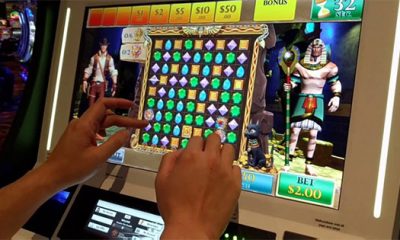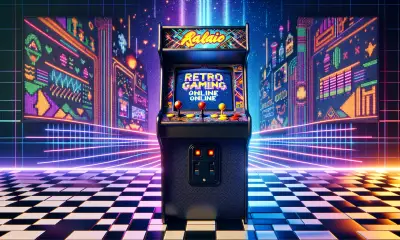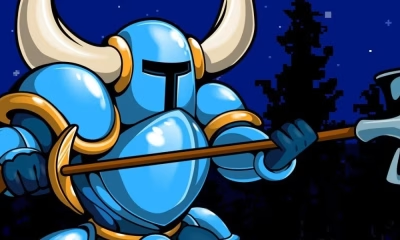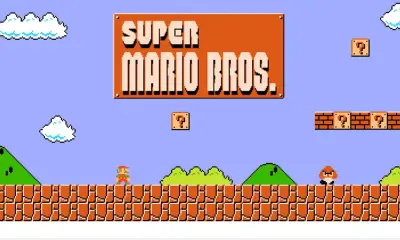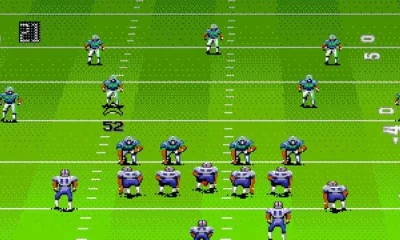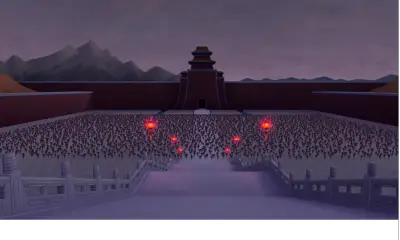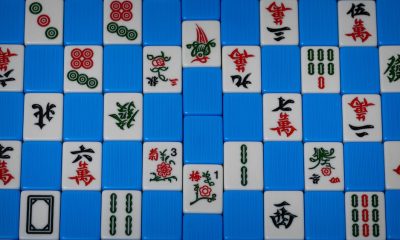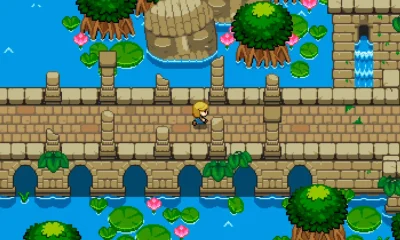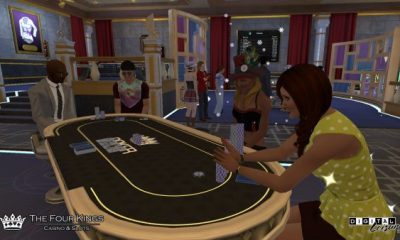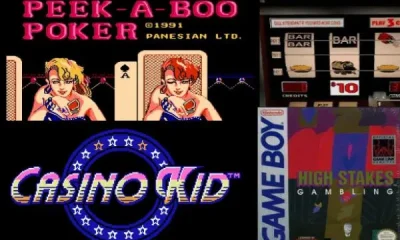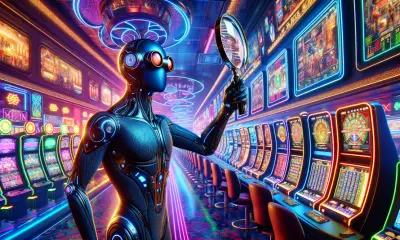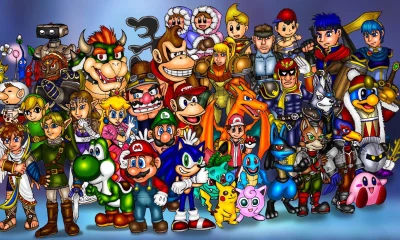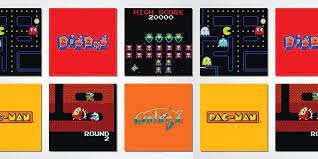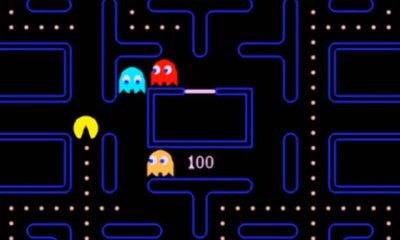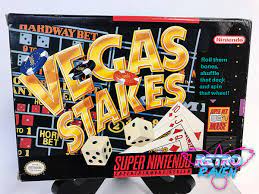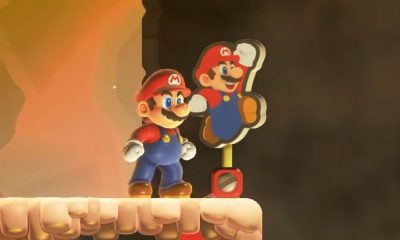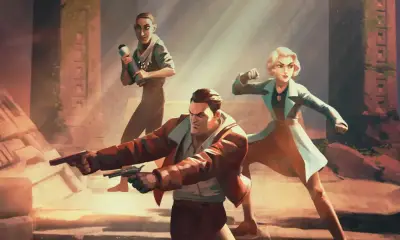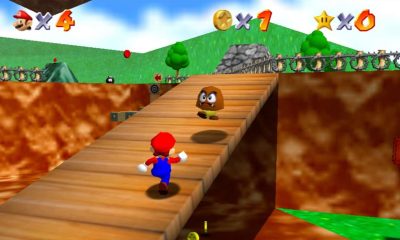One of the most exciting aspects of playing retro games wasn’t necessarily completing the main narrative but discovering hidden secrets within the game itself. From secret levels to miraculous cheat codes, we simply couldn’t get enough of all these hidden gems. Easter eggs added an extra layer of depth and excitement to classic games, rewarding not just skill but also perseverance and experimentation.

Today, the gaming industry has transformed significantly since the 1980s and ‘90s, with new and immersive online-only sectors emerging. Gamers nowadays have more choices than ever before, whether that’s playing roulette games in virtual casinos or participating in massively multiplayer RGPs. Now, not all of these gaming experiences include hidden facets — online gambling games, for instance, have to be transparent about the prizes that are available after a successful spin of the roulette wheel.
Still, just because they cannot include any hidden surprises in the mechanics of the game does not mean they are locked out of easter eggs entirely. Pop-culture references and inside jokes abound in this industry, whether those are intended to be a shared secret that only the game developers would understand, or a more widespread joke intended to elicit a knowing chuckle from those players sharp enough to spot the hidden reference. And, of course, there are even more options for sneaky game developers to add hidden references in other game genres.
Hidden Levels in Retro Games
Much like catchy theme tunes, hidden levels were an absolute staple of the retro gaming genre, offering up plenty of spoils for those gamers who were willing to play off the beaten path.
When Super Mario Bros landed on the NES in 1985, it famously introduced players to the concept of Warp Zones. These hidden portals allowed Mario to skip ahead, bypassing the trickier sections of a level. Finding them wasn’t always straightforward though, and very often, they were discovered by accident.
Later titles incorporated the concept of secret sections more into the gameplay experience itself. Metroid, the bounty hunter action-adventure, featured a core of hidden power-ups, while the hidden rooms in The Legend of Zelda set the template for today’s open-world gaming.
Easter Eggs – An Inside Joke?
While hidden levels and secret portals served a more functional purpose, the easter egg was much more whimsical. Whether taking the form of in-jokes, hidden messages, or witty references, easter eggs were like a valueless reward offered up to the most observational of players.
While easter eggs in video games really came into their own during the console era, one of the earliest dates back to 1980. The creator of the Atari 2600 title Adventure hid his name in a secret room — most likely in response to the manufacturer’s policy of not crediting individual game developers.
Some of the most well-received easter eggs involved a crossover or callback to different titles and characters. The Legend of Zelda: Link’s Awakening featured a character called Tarin who bore a resemblance to a certain Princess-rescuing plumber. Doom II took things a step further, with an off-map level straight out of Wolfenstein 3D.
Behind the Appeal
Since these added extras weren’t integral to completing a game or even mastering the game-specific skills, why do they hold such a special place in the hearts of retro gaming enthusiasts? Well, part of it comes down to the element of surprise. In an age where we can pull up practically any kind of resource about a game in an instant, it’s easy to forget that little rush of joy that would come from stumbling upon something unexpected.
For retro gamers, discovering a Warp Zone or unlocking a secret character was a true accomplishment. Proof, if proof were needed, that you understood the game on a deeper level… or were simply winging it and found these hidden gems by accident!
Even today, there are still plenty of gamers out there who crave something unexpected from their favourite titles. Even if they don’t lead to tangible rewards and benefits, an easter egg here and there provides a break from the linear nature of AAA video games.
A Legacy for the Digital Age
The games developers of the not-so-distant past may have been pioneers when it came to hidden content, but their influence can still be felt in many modern games — even Web3 experiences. Developers include a few surprises here and there because they know it’s a surefire way to keep players engaged. Bandai Namco’s Dark Souls franchise is the perfect example; it offers up plenty of key items and areas for those gamers who are perceptive enough to seek them out.
And, who doesn’t love an obscure reference here and there?
Even those games that don’t seem tied to retro mechanics or setup (basically, anything that’s not a platformer or puzzle game) fully embrace hidden features. We’ve already hinted at the correlation between the hidden levels of games of yore with today’s epic open-world adventures. Games like The Witcher 3 and Grand Theft Auto V are littered with easter eggs, ranging from pop culture references to top-secret missions.
Indeed, the global gaming community’s appetite for unearthing hidden content or heading off on a mini-side quest is yet to be satiated. Especially in today’s world of instant gratification, many gamers actively want to explore what lies beneath or deepening their understanding of a game’s world and characters in some way. Sure, there may well be an abundance of guides, posts, and forum discussions dissecting every aspect of a popular game out there, but nothing beats the rush of finding that little bit of magic for yourself.

- The ‘Retro’ Component in Gaming Marketing & How iGaming Industry is Using it Wisely
- Retro Mechanics That Power Modern Bonus Games
- How retro gaming shapes modern online platforms
- What Makes Real Money Online Casinos Appealing to Players?
- From Arcade Cabinets to Browser Tabs: How Retro Gaming Went Digital
- From Arcades to Apps: Decades of Gaming Culture
- On-Chain Game Design: What Web3 Actually Adds to Core Gameplay
- The Revival of Retro Games – The Best Setup for the Real Feel
- How Developers Make Money from Free-To-Play Games
- How Retro Level Design Explains Modern Jackpot Lobby Themes and Player Navigation
- What Features Players Look for the Most in Retro Online Casino Games
- The Journey of Arcade Games into Blockchain Slots
- When Classic Design Meets Modern Tech: How Old-School Games Inspire Today’s Live Platforms
- Retro Slot Games: Still a Good Bet?
- The State of Casino Gaming on the Nintendo Switch in 2025
- 5G and Retro Multiplayer: Revamping Classic NES Games for Online Mobile Battles
- Low-Power Tech for Mobile Gaming
- From Retro Casino Games to the Online Experience
- Retro casino games: a complete guide
- How Different Industries Are Using Techniques From Gaming to Attract and Retain Customers
- The Enduring Appeal of Retro-Style Games
- Level Up Your Gaming: How to Maximize Bonuses for Retro and Online Casino Fans (2025 Guide)
- Megaways vs. Retro Slots: Which Are Better?
- Treasure In Your Attic? The Most Sought-After Retro Games
- Reliving the Golden Era of Gaming with PlayRetroGames.com
- Remembering some of the worst retro games ever made
- Top Picks: The Best Retro Games to Play Online
- Rediscover the Magic: Retro Games Unleashed!
- From 8-Bit to High Stakes: The Retro Gaming Roots of CS:GO Case Battles
- The Best Retro Themed NFL Video Games
- 12 of the Most Influential Chinese-Themed Retro Games
- The Role of Sound and Graphics in Online Casino Games
- The Enduring Appeal of Classic Table Games in Online Gaming
- Why Super Puzzle Fighter Was a Precursor to the Age of Casual iGaming
- Top Online Casino Providers: A New Era in Gambling
- The Evolution of Fast Payouts in Gaming: From Retro Classics to Modern Platforms
- A nostalgic revolution among retro gamers: Migrating to the thrills of online casinos
- The Increasing Role of Apps in Online Gaming
- How Retro Games Are Evolving to Match A More Mobile Gaming Industry
- Retro Game Elements in Today’s Online Casino World
- Hidden Levels and Easter Eggs in Retro Games
- The History Of Gambling In Asia
- Retro Video Game Mechanics in Casino Games
- Most Popular AK-47 Skins in CS2 and Their Prices
- The Psychology Behind Online Gambling: Why We Keep Coming Back
- Casual vs. Risky Plays: Balancing Fun with Crash Games and Retro Slots
- From 80s Arcades to Online Casinos: How Retro Video Games Inspired Modern Casino Games
- Why Poker Has Stood the Test of Time
- Tower.bet Loyalty Program: How to Earn Extra Bonuses
- What is the appeal of playing retro games?
